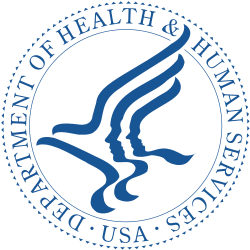External links
- Title 21 of the Code of Federal Regulations (current "Electronic CFR")
| Secretariat staff offices |
|  |
|---|---|---|
| Public Health Service |
| |
| Human services agencies | ||
| Programs | ||
Title 21 is the portion of the Code of Federal Regulations that governs food and drugs within the United States for the Food and Drug Administration (FDA), the Drug Enforcement Administration (DEA), and the Office of National Drug Control Policy (ONDCP). [1]
It is divided into three chapters:
Most of the Chapter I regulations are based on the Federal Food, Drug, and Cosmetic Act.
Notable sections:
The 100 series are regulations pertaining to food:
The 200 and 300 series are regulations pertaining to pharmaceuticals :
The 500 series are regulations for animal feeds and animal medications:
The 600 series covers biological products (e.g. vaccines, blood):
The 700 series includes the limited regulations on cosmetics:
The 800 series are for medical devices:
The 900 series covers mammography quality requirements enforced by CDRH.
The 1000 series covers radiation-emitting device (e.g. cell phones, lasers, x-ray generators); requirements enforced by the Center for Devices and Radiological Health. It also talks about the FDA citizen petition.
The 1100 series includes updated rules deeming items that statutorily come under the definition of "tobacco product" to be subject to the Federal Food, Drug, and Cosmetic Act as amended by the Tobacco Control Act. The items affected include E-cigarettes, Hookah tobacco, and pipe tobacco. [5]
The 1200 series consists of rules primarily based in laws other than the Food, Drug, and Cosmetic Act:
Notable sections: